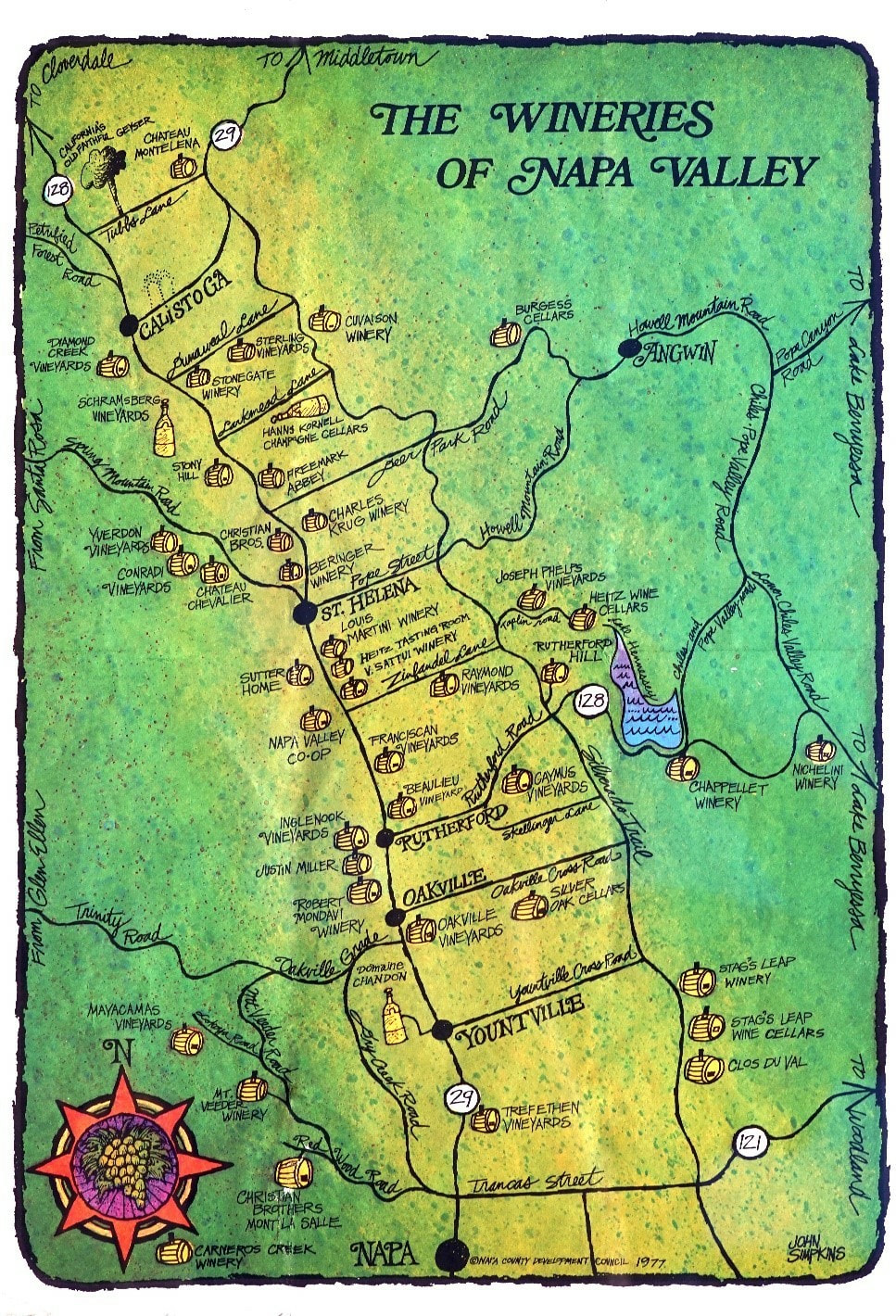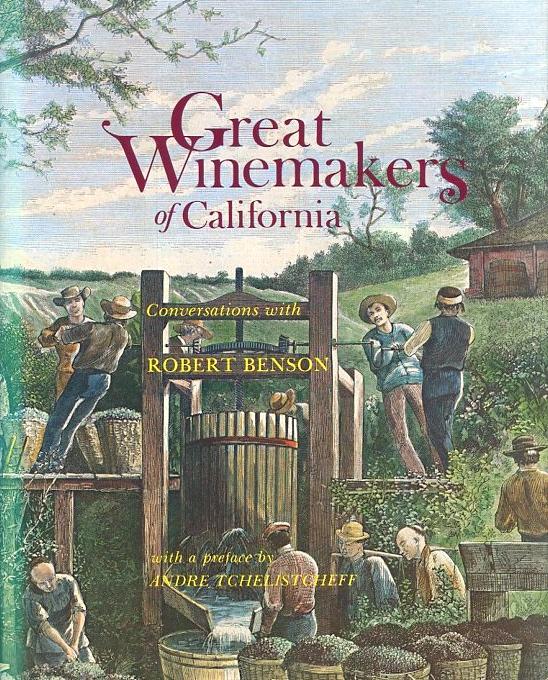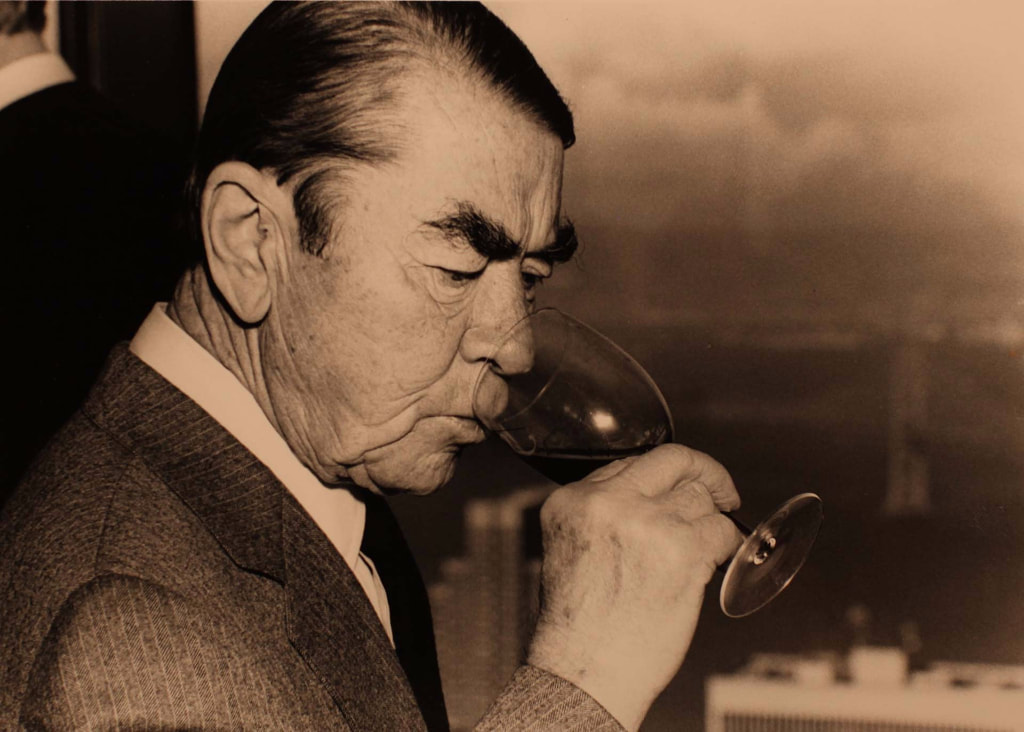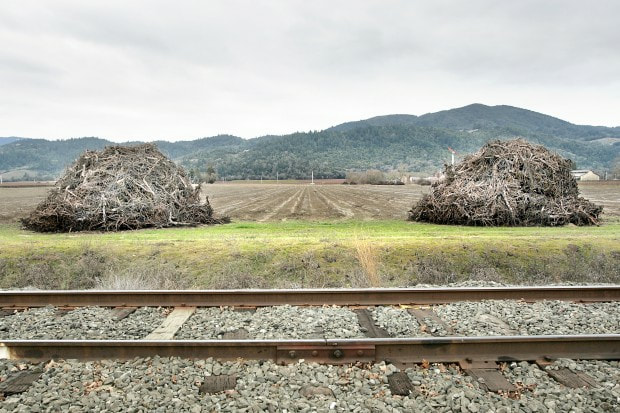n
I was an undergrad studying music at the University of New Mexico at the time. I clearly remember the tasting making national news (all four channels!) as well as the cover of Time Magazine. Even then I knew that for whatever reason, it was a huge deal.
At this seminal moment, writer Robert Benson wanted to find out more about the state of the California wine industry post-Paris tasting. From 1976 to early 1977 he interviewed several dozens of the state’s top winemakers. The result was his book, Great Winemakers of California. Published in the fall of 1977, Great Winemakers is the most accurate snapshot of the California industry in the ‘70’s I’ve ever found. Benson’s interviewees were essentially a list of the who’s who of California wine at the time: Andre Tchelistcheff, Paul Draper, Joe Heitz, Robert Mondavi, the legendary Martin Ray just months before his passing, and over 30 more.
Benson’s book is delightfully informative. He conducted all the interviews in person and later transcribed them. Interview questions ranged from general industry topics to the nuts and bolts of winemaking including brix levels, fermentation regimens, fining and filtration techniques, and laws concerning place names and varietal labeling.
In reading the interviews, I was struck by how distinct each individual was—not to mention their wines. Many came to the industry from completely unrelated fields and were amateurs learning on the job. Others, and Joe Heitz of Heitz Wine Cellars immediately comes to mind, had enology degrees, extensive training, and experience at multiple wineries. Regardless, all possessed what can only be called a pioneer-like spirit and the drive to make their respective wines the very best, while trying to establish the reputation of the California industry as world class. Here are some of the most notable topics from the interviews as well as memorable quotes. I hope you find them as fascinating as I did.
Big vs small wineries and quality: depending on who was being asked, both small and large wineries had the potential to make top quality wine. Rick Forman, then winemaker at Sterling Vineyards, was convinced that smaller was better saying, “Some very good wines can be made in quantity. But wines of style, of breed and character, can only be made by hand in small batches.” However, the venerable Robert Mondavi believed just the opposite. Ever the politician, Mondavi was quoted, “I’d say that 95% of the time the finest wines are made by the smaller wineries. But there are exceptions to the rules. I’ve concluded you can produce wines in reasonable quantities that are equal to those of the smallest producer. If you have climate, soil, grape varieties grown in the proper location, and you add dedication, desire, the will to train your people, and the proper facilities, you can duplicate what the smallest producers can do.”
Varietal percentage law: at the time of the book’s release, federal law required that varietal wines only contain a minimum of 51% of the grape stated on the bottle. Shocking, but true. The rest could be anything else available. Some thought the law fine as it was. Others wanted the minimum percentage raised to at least 60%, if not 75% percent. Martin Ray’s wines were 100% varietal. No surprise that he was quick to say, “I think it should be thrown out, for god’s sake!” Karl Wente of Wente Vineyards was a little more forgiving saying, “I’d like to see it go to 60%. I like the opportunity for a little blending with the Grey Riesling, Pinot Noir, and sometimes the Petite Sirah.” If not familiar, Wente’s Grey Riesling (Trousseau Gris) was one of the most popular white wines in the U.S. at the time.
Vintage dating and Christian Brothers. One of the interviewees was Brother Timothy of Christian Brothers, who had been working at the winery since 1928—almost 50 years at the time of the book’s release. With multiple winemaking facilities in Napa and beyond, Christian Brothers was easily the largest winery of any included in the book at well over a million cases per annual production. Brother Timothy strongly believed that quality wine could be made on a mass scale. Also—and this is striking—that blending vintages to achieve a consistent “product” as he called it, was far superior to vintage-dated wines.
Use of centrifuge: proved to be a controversial topic. Those that could afford them used them, and proclaimed their superiority in clarifying must before fermentation or the wine before bottling. Richard Arrowood of Chateau St. Jean in Sonoma said, “Let me tell you the reason most people don’t have centrifuges: they are terribly expensive. But the improved quality of the finished product justifies the expense for us.” On the flip side, smaller wineries without the capital or space were against their use, citing that they stripped the must/wine of important solids and character. To point, when asked if he used centrifuges in the winery, Warren Winiarski of Stag’s Leap Wine Cellars said, “No. I don’t know if I’d use one either. I’m not sufficiently impressed that it improves white wines.”
Cultured yeast only: cultured yeast was universally used. Natural ferments were viewed somewhere between mysterious and an anathema to be avoided at all costs.
Use of European place names: a topic of great controversy. Practically every winery included in the book had a lower tier cash-flow line of wines labeled Chablis, Burgundy, Claret, or the like. Most accepted it as the norm. Joe Heitz of Heitz Wine Cellars strongly defended the practice of using place names saying: “The American Indians didn’t start bottling Burgundy. It was Frenchmen, Spaniards, and Germans who came to this country. They brought their cuttings from home, and said, ‘Ah, we’re in California now, this is California Burgundy, or this is Rhine wine.’ It was a natural transition; we didn’t suddenly become a civilized nation and decide to go into the wine business by stealing European place names.” Others condemned the practice of using European names including Andre Tchelistcheff of Beaulieu Vineyards who said, “It is very false for us to steal the appellations of Europe. I accepted it with the bleeding of my heart, but it was a necessity, a compromise I accepted with tears.”
Hand vs. mechanical harvesting: at the time of the book’s release, mechanical harvesting was anything but common practice. And the quality of the machines was definitely not what it is today. However, Donald Alexander of Mirassou Vineyards was convinced of their use saying, “Mechanical harvesting has to be better than picking by hand. We capture the flavor by crushing right in the field.” Martin Ray completely disagreed saying, “Unless your land is level, there is no equipment to take care of it. Anyway, you can’t ever get satisfactory results with mechanical picking of the grapes.”
The Paris Tasting: without exception, everyone expressed excitement about the results of the tasting. Benson’s final question in every interview asked if California wines were better than their European counterparts. Most said an emphatic “yes” with the few outliers—citing Burgundian varieties like Chardonnay and Pinot Noir—saying, “close but not yet.”
The diminutive giant: though many of Benson’s questions were topics of debate, no one argued the monumental importance of Andre Tchelistcheff. Many of those who contributed to the book either worked directly with him or used him as a consultant not to mention as a source of knowledge and experience. Everyone, without exception, praised him to the heavens. No mystery that Tchelistcheff’s interview is by far my favorite in the book. Andre’s depth of knowledge about Napa Valley was remarkable—far beyond anyone else at the time. When asked a simple question about planting appropriate varieties in specific places in the valley, he responded with a lengthy tutorial on the Napa Valley’s micro climates and soil types, citing the most appropriate rootstocks and grape varieties for each. His knowledge of winemaking techniques for various styles of wine was also unmatched.
Quick story: I once had a chance to meet Andre—but didn’t. In 1988 I was at a trade tasting at the Mark Hopkins Hotel in the city. I saw the diminutive Tchelistcheff (not much over five feet tall) with a group of people and felt the urge to go over, say hi, and introduce myself. But I was a mere bartender at the time and let the moment pass. I’ve always regretted it.
My first trip to Napa Valley was in the summer of 1983, about six months before Carla and I moved to California. Highway 29 was lined with wineries whose labels I’d seen on wine lists the previous two years while working in restaurants in Ann Arbor during grad school. The valley and its wines seemed brimming with life, potential, and possibility. Then came phylloxera and everything changed. In the span of a decade most of the vineyards in Northern California were decimated and had to be replanted to the cost of $20,000 or more an acre. Many smaller vineyard and winery owners simply couldn’t afford to replant and quietly sold their properties and faded into oblivion.
Replanting also changed varietal demographics and overall wine character of the valley dramatically—forever. The combination of high cost of land (yes, even then) and expense of replanting practically forced most owners to choose grapes that were not only in high market demand, but would also would fetch the highest possible tonnage prices. In other words, Chardonnay, Cabernet, and Merlot. But perhaps the greatest impact of this mass replanting–and something rarely spoken or written about–was that the plant material completely changed. New low vigor native rootstocks and different clones replaced what had come before, most notably the move away from using the AXR1 rootstock that had been so susceptible to phylloxera. The new rootstock-clone combinations required longer hang time for the fruit to reach physiological maturity, and longer hang time made for higher sugar content in the grapes and ultimately higher alcohol levels in the finished wines. Gone forever were the sub-13% Cabernet Sauvignons of the ‘60’s, ‘70’s, and early ‘80’s, with the new wines weighing in at 14-14.5% alcohol by volume and beyond. The new style of wines was debated by press and consumers alike, with critics and the use of numerical scores blamed for the new higher alcohol trend. But in the end, it was the different plant material that was responsible for the change in wine style. As always, nature bats last.
Final Thoughts
With the passing of time it’s all too easy to forget where we come from. There is so much about California wine that we take for granted simply because it’s been around for decades and become an almost unseen part of the fabric of our professional lives. One of the most important take-aways from Benson’s book for me is the need to keep California wine history on our radar. Further, to maintain an intense curiosity about where the industry came from, and to laud–and never forget–the first generations who put California on the world wine map. Our industry would not exist without the likes of Martin Ray, Andre Tchelistcheff, Robert Mondavi, Paul Draper, Joe Heitz, Warren Winiarsky, Dick Peterson and many more. They are the reason why the California wines of today are considered among the greatest anywhere.
*A sad footnote: just yesterday I learned of the passing of long time Simi winemaker Mary Ann Graff. She was the only woman interviewed in Benson’s book. Graff was the first woman to earn a degree in Enology at UC Davis, the first woman winemaker of the modern era in California, and the first woman on the Board of Directors of the American Society for Enology and Viticulture. I met her several times over the years and always appreciated her deftly balanced wines, her wit, and her passion for the industry. She will be greatly missed.
nn



